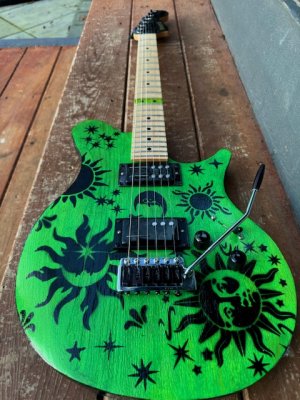Hey everyone,
New to the forum but seems to be a very informative and inclusive community.
I’ve wanted to build a guitar or customise an off the shelf guitar for years so looking for some advice as I have zero experience in this field. Just a casual player with very little knowledge of the inner workings of guitar building but with a design in mind that I would really like to run with.
I like Starcasters but never owned one. I am an Ibanez man mainly due to the necks that I have found to be most comfortable for my child-like hands. I’ve tried other necks over the years but just always found Ibanez to be the most comfortable. So my first thought was a Mooncaster and a wizard profile Warmoth neck combo as the base for the project. But after reading that the Mooncaster is not actually semi-hollow like it’s Fender/ Squire counterpart, I am not sure how to proceed.
I think I read on another forum that Warmoth necks are not compatible with official Starcaster bodies. Am I to understand that there is no work-around then? Are there any other methods in which I could use a true semi-hollow body and wizard profile (or similar) neck as the base for my build?
Any advice to get this project off the ground would be appreciated.
New to the forum but seems to be a very informative and inclusive community.
I’ve wanted to build a guitar or customise an off the shelf guitar for years so looking for some advice as I have zero experience in this field. Just a casual player with very little knowledge of the inner workings of guitar building but with a design in mind that I would really like to run with.
I like Starcasters but never owned one. I am an Ibanez man mainly due to the necks that I have found to be most comfortable for my child-like hands. I’ve tried other necks over the years but just always found Ibanez to be the most comfortable. So my first thought was a Mooncaster and a wizard profile Warmoth neck combo as the base for the project. But after reading that the Mooncaster is not actually semi-hollow like it’s Fender/ Squire counterpart, I am not sure how to proceed.
I think I read on another forum that Warmoth necks are not compatible with official Starcaster bodies. Am I to understand that there is no work-around then? Are there any other methods in which I could use a true semi-hollow body and wizard profile (or similar) neck as the base for my build?
Any advice to get this project off the ground would be appreciated.


